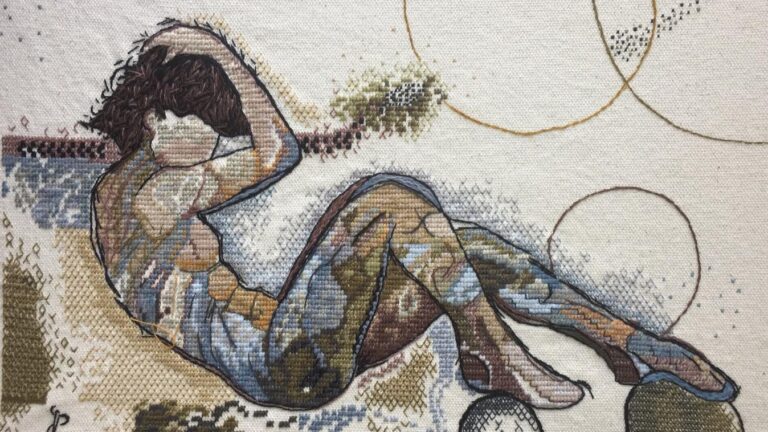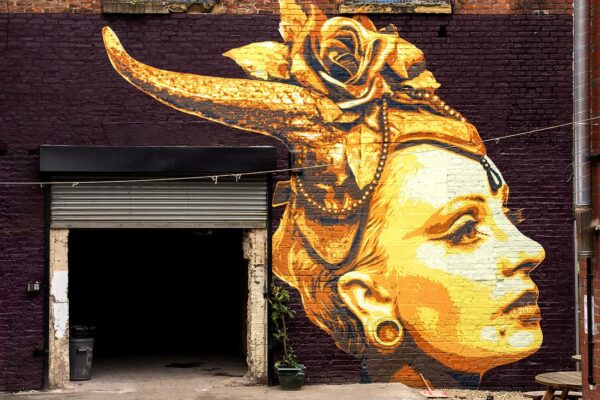Puja Bhakoo – Exclusive Interview
Internationally acclaimed tapestry-artist Puja Bhakoo is a native of India. A senior creative and advertising professional, Puja experimented with several mediums for creative expression and found her forte in creating handcrafted tapestries. In the 1990s, Puja Bhakoo reinvented the art of Petit Point (or Needle Point) embroidery by lending this European art form a unique indo-ethnic dimension. In 2012, Puja Bhakoo took premature retirement from her advertising career to pursue her auxiliary interests, including charity. She volunteered in different charitable organizations and also extended free designing support to various NGOs.

When did you first become interested in working with tapestries, was there a particular moment that sparked this enthusiasm?
As a teenager, I loved sticking my finger into every hobby pie from sewing, crocheting, macrame & carpet weaving to typing, singing, painting and even playing the guitar. In my final year of BSc Home Science, I had to create a stitch sampler for my clothing & textile practical. This exercise sparked my interest in embroidery. The sheer number of different designs and stitches I could experiment with using just a tiny needle enthralled me. I found it far more appealing to paint on fabric with threads than use wet messy paints that soil hands and stain surfaces. Although I started to pursue embroidery as a hobby, I wasn’t happy embroidering mere motifs or floral borders on fabric. I was on the lookout for a dense and intricate style that would cover large swathes and entire surfaces. While researching the subject, I came across some fantastic books on Petit Point in my college library. I devoured these books and learned the nuances of the craft. While running my advertising business in my mid-twenties, I would source quick-stitch kits from the market and embroider on pre-painted canvas with threads. Since the pre-painted canvas came in limited design and size choices, I soon got bored and decided to paint it myself. Around the same time, my regular wool supplier’s showroom had a short-circuit where most of his woollen yarn got burnt at both ends. The sight of a room full of colourful woollen shreds gave me the idea of using wool instead of threads for embroidery. I bought a room full of yarn scrap from my wool supplier. Then I put together my passion for embroidery, my knowledge of Petit Point, and my exposure to various designing software to create my own digital paintings, which I turned into huge Petit Point artworks. I love to labour over minute details and work endlessly to get the expressions right. Over time, I created dozens of Petit Point tapestries, each of which is steeped in nostalgia for me.
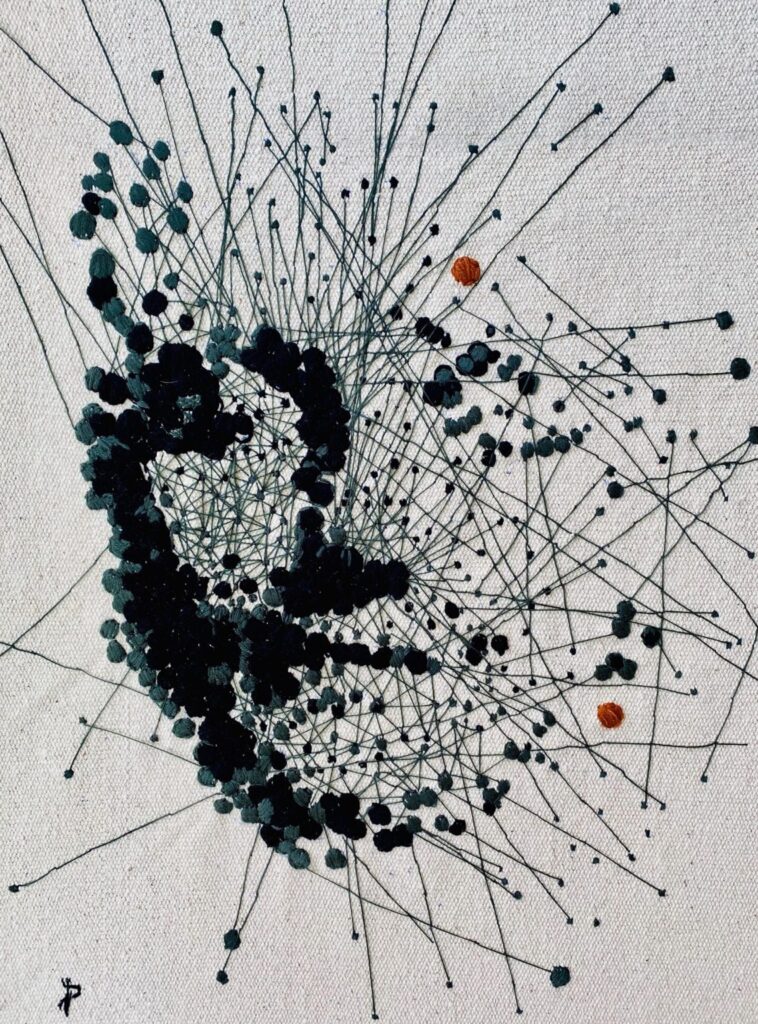
Where do you source your ideas from?
As an artist, I am on a constant inspiration-hunting spree. My creative journey began during a visit to Rajasthan in India, where I was endlessly fascinated by the local Rajasthani men with their colourful turbans, luscious moustaches, and strong jawlines. For several years, I created portraits in Petit Point tapestries, for which I travelled extensively through India’s western belt, clicking pictures of my muses. The tapestries that I now create are more abstract and contemporary. I often turn inwards to draw a theme from an experience that currently monopolizes my mind. Then I search the net for ideas that resonate with my topic. Using photoshop, I first create digital artworks and finally translate them into tapestries.
GREEN SCAPES Drawing inspiration from nature’s ability to enrich the heart and nourish the soul, Green Scapes invites Nature into your living spaces – ushering your imagination to grassy roads, ferny brooks and rippling green fields. Green Scapes complements your quest for eco-positivity and unites you with the earth urging you to become one with it.
MYSTIC STROKES Inspired by an urge to create a functional form that summons your inner minimalist, Mystic Strokes aims to reduce the complexity of life by eliminating all non-essential features and concepts. Because perfection happens not when there is nothing more to add, but when there is nothing left to take away.
MINDSCAPE A pandemic spells global challenges. These challenges call upon the mind to reimagine, recalibrate and rewire. Mindscape celebrates the human mind’s ability to make fresh neural connections and sow the seeds for innovation and a safer tomorrow.
PANDEMIC This line of handcrafted tapestries is inspired by the need of the hour for all of us to be more humane and magnanimous toward those who have borne the heaviest brunt of the current pandemic.
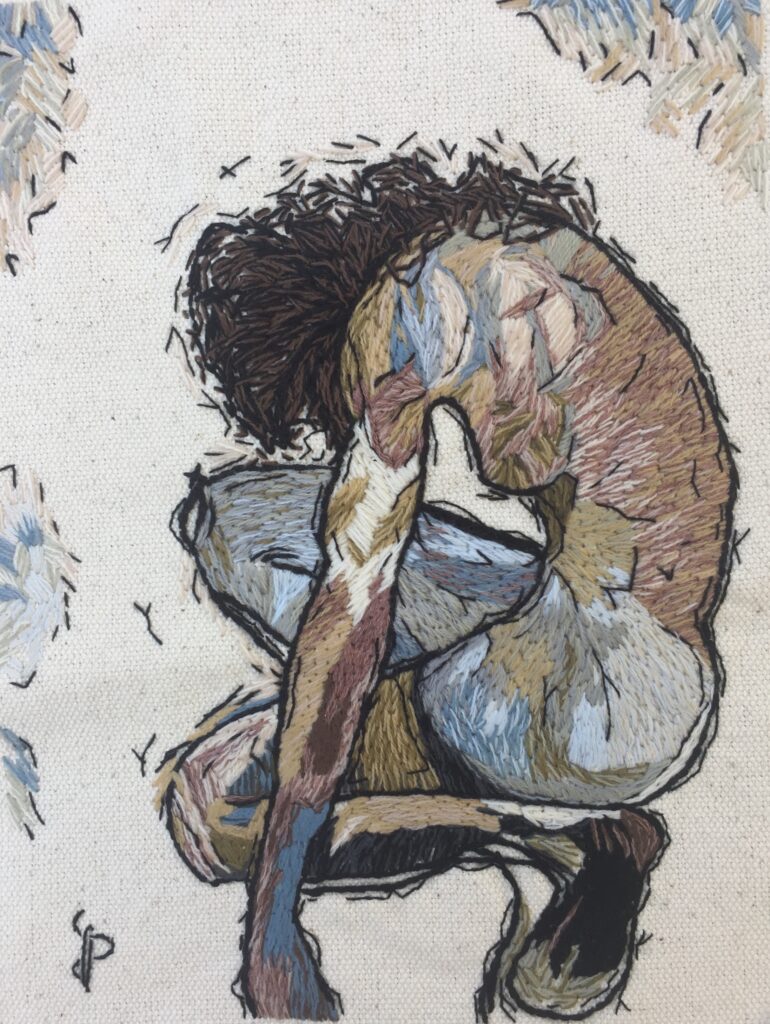
Do you use your work to express your identity – your culture and being a woman?
For years, my work represented the rich culture and traditions of my country through portraits of Rajasthani men and women. I have always felt strongly about women’s issues and women’s liberation and our right to express our individuality. My new works reflect my current state of mind. During the beginning of the Pandemic, I created the Mindscape series, which celebrates the human mind’s ability to make fresh neural connections, to reimagine, recalibrate and rewire, and to sow the seeds for innovation and a safer tomorrow. My current line is called Pandemic. It urges the world to show compassion and generosity towards those who have borne the brunt of the pandemic in terms of loss of livelihood.
What are your tapestries made of and do you have a favourite material?
I initially worked on Penelope canvas using wool. I now use cotton fabric and threads.
What role do you think fibre art plays in contemporary art?
Fibre art in general, and handcrafted tapestries, in particular, is enjoying its place under the spotlight in contemporary art at the moment. A handcrafted tapestry is a unique and uncommon art form in terms of prestige and value – a creative proof of the substantial investment in terms of working hours and attention to detail. Another aspect of a tapestry which earns it respect far beyond a painting is that it can have no prints or duplicates. For example, each Puja Bhakoo tapestry is created from scratch using neither a graph nor stencil, so it is impossible to replicate – even by the artist herself. While this lends an aura of exclusivity to each creation, it also makes the supply curve vertical.
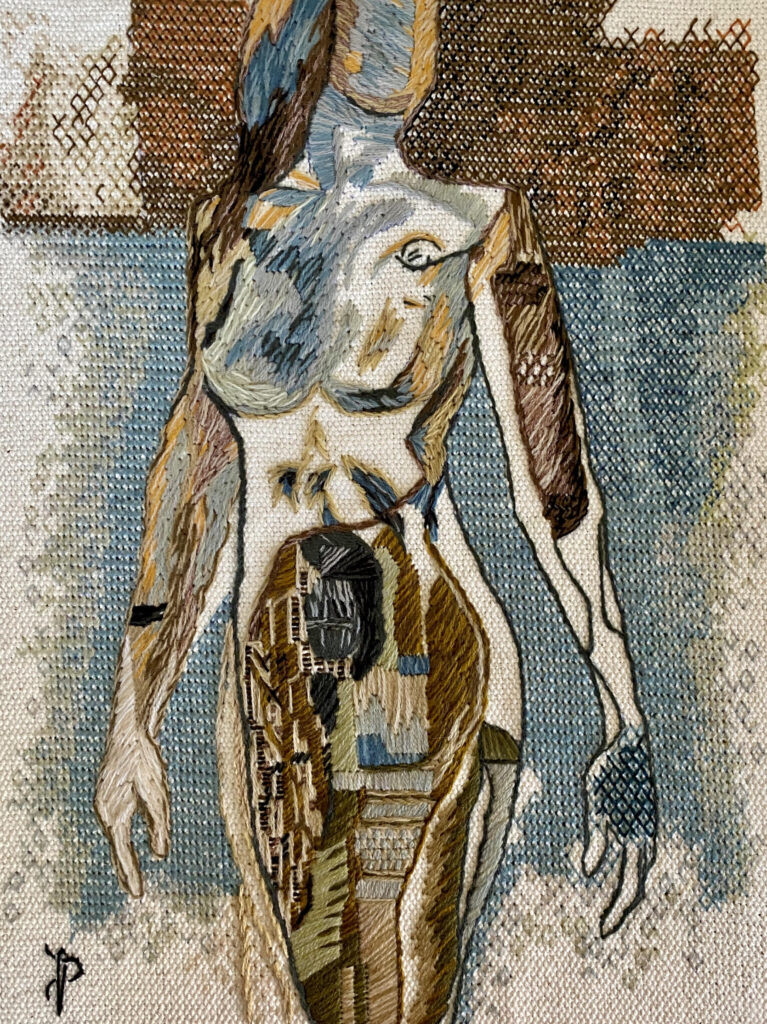
When do you know you’re satisfied with your tapestry?
They say a work of art is never finished; it is abandoned. I continue working, picking un-picking again and again till I get the result I have in mind. I then leave the tapestry to gestate for a week or two, so I can approach it with a fresh mind and erase any creative anomaly that I subsequently notice.
What project has given you the most satisfaction and why?
I have loved doing my MINDSCAPE series the most. This series was in complete tandem with my state of mind during the beginning of the Pandemic when I wrote blogs and poems to inspire my friends and followers, urging them to keep a positive mindset in the crises. The global challenges posed by a pandemic call upon the mind to reimagine, recalibrate, and rewire. Mindscape celebrates the human mind’s ability to make new neural connections and sow the seeds for innovation and a safer tomorrow. So Mindscapes translated my thoughts into art on fabric.
Do you think your work evokes particular feelings in your audience, do you wish to evoke something in your audience?
Yes, I want all my works to connect with my audience. That is why I usually write a note or a poem that expresses my idea and the sentiment behind creating a particular tapestry. PANDEMIC, my new line of handcrafted tapestries, calls upon the world to be more humane and generous toward those who have borne the heaviest brunt of the current Pandemic.
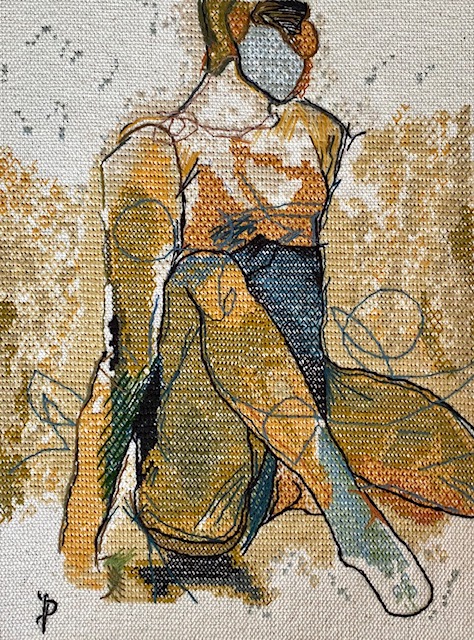
How significant of a role do you believe you have played in reinventing needlework?
During the 18th century, tapestries, a collaborative effort of designers, weavers, embroiderers, and sculptors, were associated with the ruling classes and the elite. Over the years, increased mechanization led to slipping standards and reduced attention spans. In a two-minute noodles world, tapestries too were diluted to quick stitch kits. It became rare to locate a needlepoint sample that reflected laborious artistry. So in that sense, I was able to revive and reinvent the art of Petit Point embroidery by lending it a unique indo-ethnic dimension.
What do your tapestries symbolize and mean to you?
Tapestries are an obsession that has only grown over the years. They mark the chronology of my creative journey, symbolizing how my genre shifted from figurative realism to figurative abstraction and contemporary and how it evolved in keeping with the current times.
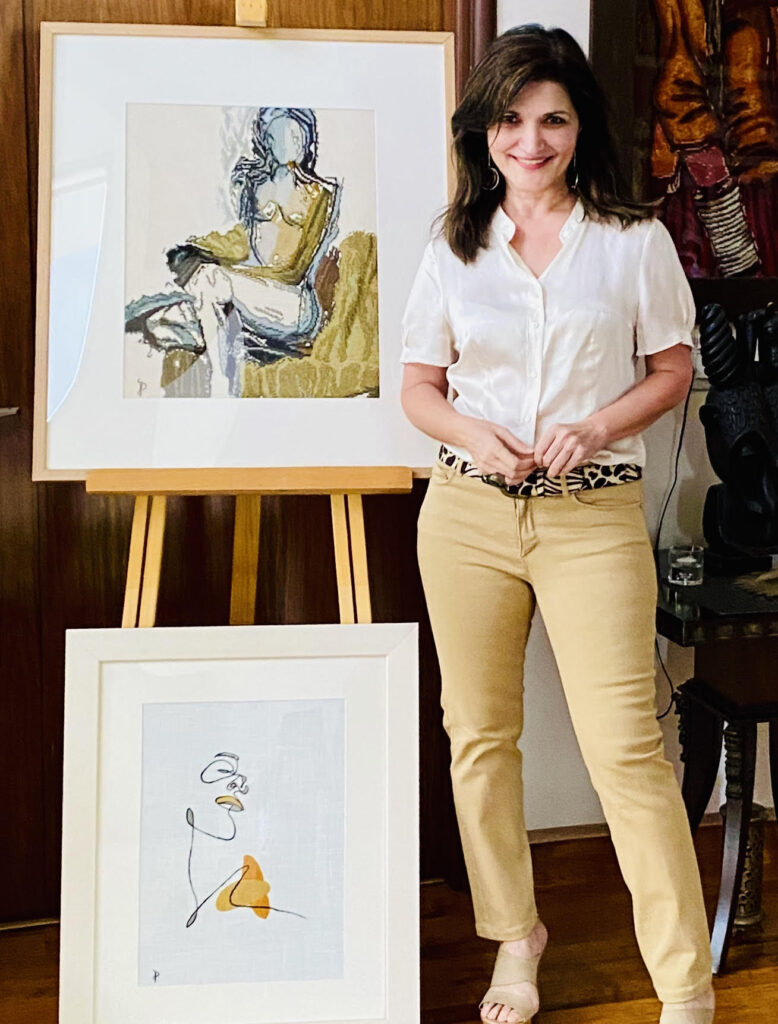
Have your own expectations of your work changed throughout your career?
Yes, earlier, I created only for my home and my environment. Now I create something which works for me with an eye on what will resonate with the art world because I need to raise funds for tapestry for charity In 2015, looking out for funding options for my charitable pursuits, I had a eureka moment. Being an avid embroiderer, I decided to use my PASSION for embroidery to fund my MISSION for charity. I then founded Tapestry-For-Charity — an initiative that aids that utilizes proceeds from the sale of my tapestries for the education and rehabilitation of underprivileged children. So now, every time someone buys a Puja Bhakoo Handcrafted Tapestry, an underprivileged child can live better. And that, in my opinion, is the most fulfilling part of doing what I do. I believe that my journey through Tapestry-For-Charity is symbolic of IKIGAI. Ikigai is a Japanese concept, which is a meeting ground of what you love (your passion), what the world needs (your mission), what you’re good at (your vocation), and what you get paid for (your profession).
What specifics do you pay attention to with your tapestries e.g. colour, texture, size?
After embroidering with bright woollen yarn for decades for mu Petit Point embroideries, I made a creative switch to soft and neutral colours. I now embroider on cotton fabric using threads.
Can we expect any upcoming work from you?
My current line Pandemic will see a few more pieces. As long as this Pandemic grips our senses it seems that I too will oscillate between promoting lateral thinking through Mindscapes and kindness through Pandemic.
www.pujabhakoo.com
www.instagram.com/pujabhakoo
Interview by Kamila Krzyzaniak

